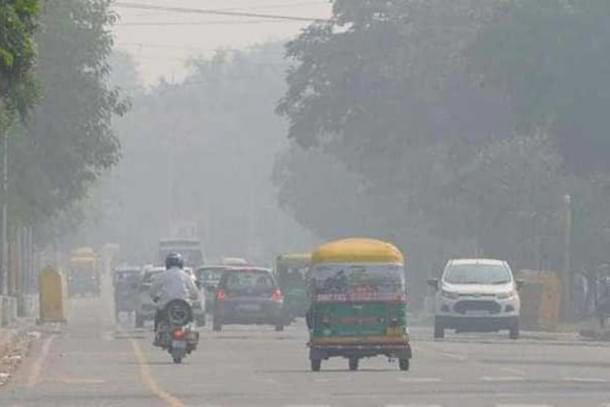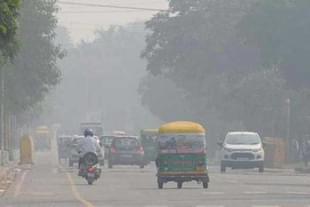News Brief
Kolkata And Mumbai Most Polluted After Delhi, Bengaluru And Chennai Witness Fastest Worsening Of PM 2.5 Levels: CSE
Arun Kumar Das
Mar 08, 2023, 09:50 AM | Updated 10:32 AM IST
Save & read from anywhere!
Bookmark stories for easy access on any device or the Swarajya app.


All mega cities in India, irrespective of their locations in different geo-climatic zones, faced the challenge of worsening PM 2.5 levels during the winter season of 2022-23.
While levels in Delhi have been the highest, the remaining cities have also experienced very poor to worsening trends.
This has emerged from an analysis of real time PM 2.5 data done by Centre for Science and Environment (CSE) in Delhi, Kolkata-Howrah, Mumbai, Hyderabad, Bengaluru and Chennai for the winter period (1 October 2022-28 February, 2023).
The objective of this analysis has been to assess the peer mega cities to understand the longer term seasonal variations and annual trends in particulate pollution.
“While Delhi’s winter air quality hogs all the eyeballs, the rising winter air pollution in other mega cities including Kolkata, Mumbai, Hyderabad, Bengaluru and Chennai, does not get adequate attention.
“While Delhi has bent its seasonal pollution curve, winter air pollution is high or on the rise in most other mega cities.
“These cities located outside the northern plains may have more favourable meteorological conditions to contain the peaking of pollution during winters, but their overall city average and levels across locations can cause very high exposures.
“This demands round-the-year action to control emissions in cities that are motorising and urbanising rapidly,” says Anumita Roychowdhury, executive director-research and advocacy, CSE.
“Winter season presents a serious challenge in all mega cities despite them being located in different geo-climatic zones with varying meteorological and topographical conditions.
“The PM 2.5 levels remain elevated and peak during winter in all mega cities. This winter, several of these cities (excluding Delhi) recorded higher seasonal PM 2.5 averages compared to their previous winter. This clearly indicates that the overall emissions are high or may be rising in those cities,” says Avikal Somvanshi, senior programme manager, CSE
The Methodology
This is an assessment of annual and seasonal trends in PM 2.5 concentrations for the period 1 October to 28 February for the years 2019-20, 2020-21, 2021-22 and 2022-23.
This analysis is based on real time data available from currently working air quality monitoring stations in Delhi, Kolkata-Howrah, Mumbai, Chennai, Hyderabad and Bengaluru.
A huge volume of data points have been cleaned and data gaps addressed based on the USEPA method for this analysis.
This analysis covers 106 continuous ambient air quality monitoring stations (CAAQMS) spread across the cities. Delhi (40), Kolkata (7), Howrah (3), Mumbai (21), Hyderabad (14), Bengaluru (12), and Chennai (9) have more than one real-time station, therefore citywide average is used for comparative analysis and it is defined as average of all city stations that have been functional for the defined study period.
Key Highlights
Kolkata and Mumbai are the most polluted after Delhi, while air quality has worsened fastest in Bengaluru and Chennai.
Compared to the winter of 2021-22, only Delhi has shown an improvement in air quality — its current winter air was 9 per cent less polluted. Winter averages of PM 2.5 increased in the remaining five mega cities.
When PM 2.5 levels in the current winter is compared with the average for the previous three winters, Bengaluru and Chennai’s performance emerges as the worst — their current winter air was 15 per cent more polluted than the average of their previous three winters.
Mumbai’s winter air was 14 per cent and Hyderabad’s 3 per cent more polluted. Kolkata’s overall winter average of PM 2.5 has improved compared to the previous three years, but is stagnating since last year.
Kolkata’s winter air was 8 per cent less polluted compared to the average of previous three winters, but this winter’s pollution level is identical to that of last winter, showing a stagnant trend.
When the PM 2.5 peak level of current winter is compared to the average for previous three winters, Bengaluru’s performance works out to be the worst: its winter peak was 68 per cent higher than the average of its previous three winter peaks. Similarly, Chennai’s winter peak was 28 per cent higher, and Hyderabad’s 8 per cent higher.
Delhi, Kolkata and Mumbai had lower peaks compared to the average of the previous three winter peaks. Mumbai’s winter peak was 7 per cent lower, Kolkata’s 11 per cent lower and Delhi’s 23 per cent lower.
Monthly air quality patterns vary across mega cities: Unlike Delhi which has two pollution crests during the winter season (November and January), other megacities have just one crest.
November is the worst air quality month for Hyderabad and Bengaluru, while for Mumbai and Chennai, it has been January. Kolkata’s worst month is December. Kolkata was the most polluted mega city (excluding Delhi) for the months of November, December and January. In Feburary, Mumbai overtook Kolkata.
Winter is a problematic season for all mega cities, but intensity of the problem varies: The days with bad air quality occurred in clusters during the winter season in mega cities.
The clustering of bad air days was longer in Delhi, Kolkata, Mumbai and Hyderabad, but of shorter duration in Bengaluru and Chennai. Intensity and duration of these bad air days was long enough in Delhi to get classified as a smog episode.
The Way Forward
Says Somvanshi: “The winter period is a special challenge in all cities as adverse meteorological conditions trap pollution and increase concentration and exposures. The impact is worse if the overall pollution in the city is high and is worsening.”
Roychowdhury adds: “This demands stringent action round the year as well as emergency action during the bad-air days to bring down the overall pollution levels.
“Efforts should focus on reducing emissions from vehicles, industry, waste burning, construction, and solid fuels in households, among others. This is also needed to meet the new target of 40 per cent reduction in particulate pollution under the National Clean Air Programme.”
Arun Kumar Das is a senior journalist covering railways. He can be contacted at akdas2005@gmail.com.





